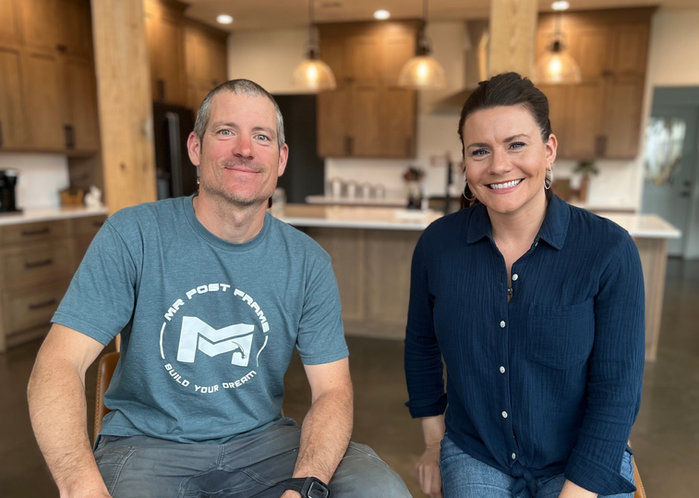Introduction:
In this post we will be talking about plumbing. But, before we can get to the plumbing, I like to level my entire interior, or whats going to become my interior. Through that process I like to get it as close to grade as I can. Typically, when building for others, I avoid doing the plumbing, but in this case, I'm taking the opportunity to show you how to DIY your own underground plumbing for a house on a slab or a post frame with a slab. I've done my personal plumbing for my entire life on all my remodels. You may live in an area where you're not allowed to do that, but fortunately for me, I have been able to.
Details:

Once you have everything leveled out, you can dive into the details. I have a laser level, but that's not necessary. In my case, I have the shell up, so if you have the shell up, you could run string lines across where the finished walls are going to be. This helps ensure the proper placement of fixtures. I have plans for this build with measurements for toilet drains, sink drains, etc. However, when running vents, you need to consider where you can run them up a wall. In my case, with a four-foot frost wall on a footing, I can't run vents up the outside walls. I'll cover this more as we build the walls.
So, let's start with the things you need. The area is pretty close to grade; my finished concrete will be here, and insulation will be here, resulting in a five-inch slab. This gives you an idea of what I'm working with. Now, let's discuss determining where your main plumbing leaves the building. In my case, it's a pre-existing septic tank, and I've stubbed in a four-inch schedule 40 PVC pipe for that purpose.

Now, I'll mark where my main line and lines branching off it will be. I use a trencher for this. Before marking those lines, I have three four-inch PVCs for incoming water lines. I'll stub those up and secure them to avoid complications. Additionally, there's another one for a three-inch schedule 80 for electrical service. I'll mark the main line and lines shooting off it by measuring from the concrete wall to the center of my pipe. This ensures that I'm running parallel to the outside walls. It simplifies the process when breaking off to fixtures.
Moving on, I'll walk you through the process of trenching the main line and the first line going over the bathroom. I'll ensure a 13-inch rise across for proper slope, considering a quarter inch per foot for waste pipes. Once done, I'll move on to the next bathroom and utility area.
Review:

So we've completed the plumbing for a bathroom. I prefer running water lines up through a PVC pipe, using a two-inch PVC pipe with a long sweep 90. The pipes go into the insulation, and we fill it with spray foam. This way, when the concrete is poured, the tubes are never in direct contact. This prevents accidental damage while pouring the concrete.
The toilet vent is in place, and for the tub-shower, I've constructed a 16 by 16 box. The plumbing pipe, where the trap will connect, needs a bit of excavation, but I'll do that after the concrete is poured. Once everything is hooked up, we'll insulate it. A three-inch line runs to where it exits the house, while the main four-inch line goes all the way up. We've covered all our water lines with sand. We have connections for the refrigerator water line, kitchen sink, utility sink, washer, dryer, and all the master bathroom fixtures.

At this point, all PEX lines are insulated, brought up within the insulation, and enclosed in a protective box. This box will be covered to shield it from the concrete. It may look a bit messy now, but it'll appear neat and clean once it's all done. I prefer running an individual line for each sink and toilet. It's all under the slab, so there shouldn't be any issues. However, having multiple lines going to the same bathroom provides flexibility if needed. We've ensured that everything is properly braced to prevent displacement during the concrete pouring process.
Thank you,
MR Post Frame

Patreon Group:
Interested in tackling your build on your own? If you want to explore the possibility of being your GC or self-building, our Patreon membership is for you! It's a community of like-minded people offering support, discounts, Q/A, and more.